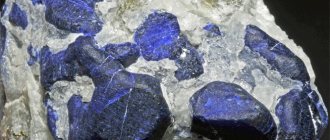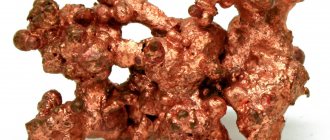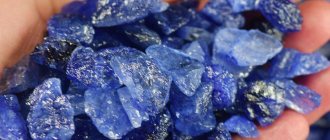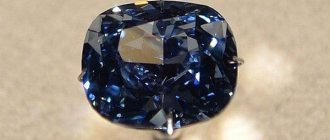In our new article you will learn how you can decorate your bathroom and kitchen with marbled tiles and porcelain stoneware. We present to you the best examples from the portfolio of the Fundament Group of Companies in recent years, which will show the possibilities of fashionable design solutions.
White marble
As you know, white marble is the most suitable material for sculpture and sculpture; it combines strength with tenderness, and pure whiteness seems inspired by a mysterious life.
Since ancient times, as a rule, only white marble was used for figured sculpture, although in ancient times sculptures were made from many other varieties. Even in ancient times, white marble was distinguished by its structure into two varieties: lamellar (lamellar) and sugar-like. The most valued was the white lamellar marble, which was produced on the island of Paros, and at the end of the 19th century, the most popular varieties for sculpting sculptures were the sugar-like Carrara marble. Parian marble was mined in the Marpessa mountain range. This is the only marble that was mined in ancient times in underground quarries by the light of lamps, hence its name “Lychnites”. This marble is coarse-grained, with a slight yellowish tint, but it is slightly translucent and is characterized by a delicate velvety shine. Thanks to this semi-translucency, it is possible to create figures that cannot be made from other materials.
Parian marble, due to its properties and also because of the difficulty in extraction, was very highly valued in ancient times. Soon after the classical era, the quarries were abandoned and then completely forgotten. It was only at the end of the 18th century that they were rediscovered by the French. One quarry, where only relatively small blocks were mined, goes more than 100 meters into the mountain. In 1836 Greek authorities restarted mining in these quarries. Later, the Greek architect Kleontes discovered a deposit of marble in the same place, which was significantly superior in beauty to the classic “lychnite,” and its mining began in 1857.
To the northeast of Athens there is Mount Pentelikon; the Parthenon, the Temple of Olympian Zeus and a large number of other immortal monuments of art of Athens were built from the marble of this mountain. Pentelicon marble is usually milky white in color, this color changes over time due to the iron it contains, and ancient products, gradually, under the influence of the atmosphere, become covered with a beautiful golden-brown patina. Often this marble contains veins of green talc with mica. If such veins are located close to each other and their layers resemble an onion, then this species was called “lapis phrygiens” by the Romans, and “cipolino” in later Italy.
Pentelikon was first brought out of oblivion by the Englishman Dobwell at the beginning of the 19th century. He found the ancient quarries completely abandoned and destroyed, but he was able to identify many places where huge blocks of marble had once been broken off and lowered onto the plain. Since the liberation of Greece from Turkish rule, these quarries have become active again; By order of King George I, they began to develop them, at first for Athens. Later, Pentelicon marble was used not so much for sculptural as for architectural purposes.
White Carrara marble, which was mined in the Apuan Alps surrounding the city of Carrara (near Massa), 20 kilometers from the Mediterranean Sea, was discovered during the reign of Augustus. The Romans called it "marmor lunens" after the neighboring city of Luni. In ancient times, this valuable stone was mined in the three valleys facing Carrara - Colonnata, Fanti Scritti and Torano. The most prized varieties are polvaccio, bettogli and crestola. The lower grades are called "marmo bianco chiaro" first and second grade, they were used mainly for monuments and for architectural work. Dark gray Carrara marble “bardiglio” has also become widespread. The high price of these three famous statuary marbles allowed them to be used for artistic and sculptural works, and for architectural decoration they were used only in rare cases.
Marble with a slight bluish veining and a less pure shade is valued somewhat lower than pure white, and their value decreases depending on the degree of veining and purity.
In addition to the above three first-class varieties, white marble was mined in many other places in Greece and Italy, for example, Laconian, Coralian, Hymetta, etc. In ancient times, white “pelombino” marble was used in Rome. Also, white marble was quarried in Scotland - the so-called "Assyns" - and white, opalescent shell marble was quarried in Bleiberg in Austrian Carinthia. Hymettus and Lycabetus marbles are white with a grayish tint. This beautiful variety, white with blue spots, was mined in the Algerian province of Constantine near Cape Filfilah, was discovered in 1844 and in 1855 began to be developed by a Marseilles company. The same quarries also produced pure white marble for the statues. Bardiglio is the name of a hard, reddish-tinged marble quarried in the vicinity of Florence, while white with green spots was quarried in Kilkenny in Scotland.
Predominantly white marble, known from ancient Rome, has had the following Italian names since the Renaissance: white with red - pecorello; white with red veins - di sette basi; white with reddish veins of a different type - serpentello; white with red stripes - cotonello; white with red or yellow veins - africano fiorito; white with red and brown fragments - pavonazzo and peronino (both breccias); white with yellow veins - rezziato; white with bluish and red veins - also pavonazzo; white with purple veins and spots - pavonazetto; white with purple spots - cipolazzo. White marble
Black, colored and variegated marble
Black marble and colored varieties of marble - single-colored black, red, green and yellow, or multi-colored with beautiful patterns in the form of veins, spots or interspersed fragments - were especially favored by the Greeks and Romans.
The Romans valued this marble so highly that the demand for it exceeded the production of the quarries known at that time, and under the emperor Claudius they began, according to Pliny, to resort to artificial coloring of white marble, and under Nero they achieved the ability to give it a spotted color. At all times of the empire, large quantities of variegated marble were imported to Rome for the decoration of buildings, and the color and grade depended to a large extent on fluctuations of fashion. A similar phenomenon was observed previously in Greece and colored stones have always been popular there. The artificial coloring of marble for statues by the Greeks is not, however, in any way connected with this; it was not intended to hide the white color, but was done to give the statues more vitality. With the fall of the Roman Empire, all quarries of colored and variegated marbles fell into oblivion. For several centuries, artists had to use the remains of ancient works, and with the triumph of the Christian era, ancient Rome turned into a warehouse from which materials were taken to decorate church walls and altars. From Greece, then from Venice, starting from the Middle Ages, and especially in the 17th and 18th centuries, many marble fragments were also exported to Western and Northern Europe, especially to England, which were already there, at the hands of artists, receiving new forms. However, the expensive material became less and less accessible and more rare; only occasionally, during construction work in Rome or in the old bed of the Tiber, unprocessed blocks of colored marble were found that had once sunk there on the way to the Eternal City. Only in the 19th century. managed to find ancient quarries again. The first deposits were discovered in Greece. There were mainly two well-known breeds that were highly valued in ancient Greece, one red, the other greenish. Deposits of red marble were found in 1846 near Taygetos in Main by the sculptor Spiegel, and soon he also managed to find greenish marble on the island of Tino near Cape Colonna. When the intrepid sculptor first set out to penetrate deep into the mountainous region, he was predicted to die at the hands of the wild Minot bandits, but a few years later the development of the Taygetos quarries was launched and Spiegel received an order for 44 columns of red Taygetan marble, 32 feet high, for a temple being built in Rome.
Ancient quarries of colored and variegated marble were found in Egypt and Tunisia, when Mehmet Ali attempted to culturally revive these countries. The colossal columns of the church of S. Paolo fuori le mura near Rome represent a gift from Mehmet Ali to Pope Gregory XVI.
Single-color black marble was already widely used in ancient Rome. At that time, two of its varieties were known, later named “lucullan paragone” and “nero antico”. The first, matte black, was mined in Pergamon; the second - shiny and black - in Carrara. Depending on fashion, preference was given to one or the other.
Black marble with white veins was also known in antiquity, for example “nero d'Egitto” and “bianco in nero”, as well as black marble with white stripes “nero e bianco”. Intensely black marble with white spots and stripes (noir jaspe et strie de blanc) is called “grand antique” by the French. Antique black with an admixture of other colors are marbles, later nicknamed “Africano antico” - black with red and white spots and “di Porto Venere” (near La Spezia) - black with yellow veins. In the 18th century Several new breeds appeared on the market and quickly distinguished themselves in artistic production, such as the “portor” or “porte-or” mentioned in the French descriptions of 1765. It is a black, sometimes blue-black, marble, usually with white and gray veins, but also orange-yellow shiny veins, which explains its name. It was already known to ancient Rome. In the second half of the 18th century. Belgian black, or very dark gray, marble with white spots and veins “le Sainte Anne” appeared, which was especially readily used for fireplaces and tables. At the same time, in France, judging by the records of 1780, black marble with dark green and gray spots and thin wavy veins “vert de mer” was often used. In Italy, black breccia with white, gray, blue or green and brown fragments, called “africano,” was repeatedly encountered. It is also necessary to mention black shell marble with white inclusions, called “savannah”. Black marble
Features of care
But every barrel of honey has its own fly in the ointment. Unfortunately, despite all the severity and almost menacingness of this stone, it still remains the same fragile, soft and hygroscopic marble, which easily absorbs moisture if there is no special coating on it, is afraid of acidic and alkaline environments, and does not like bright foods , which may leave stains on the surface. Therefore, when choosing this expensive type of decoration for one of your rooms, a kitchen or a bathroom, think carefully about whether it’s worth it.
Of course, there are no insoluble problems, and any trouble can be leveled out with the help of all kinds of special products, polishes, waxes, cleaning compounds, etc. So, if you are ready for such features of operation and maintenance, this material is definitely for you. Its hygienic, bactericidal and visual properties remain above all praise. And you will have to pay for it, but a true connoisseur will not look at this minor flaw.
Republished by Blog Post Promoter
←All news
Red marble
The ancient world, which valued red marble, knew many varieties designated under the names given to them later. This is the monochrome red Taygetian marble. These are the red marbles used in ancient Rome - with white spots: “mane olato”, “di Porto Santo non fiorito” and “purichillo”, with white rings “rosso annulato”, with black spots or dots, then brought from Egypt “rosso anlico", Sicilian with white and green broken veins "jasper marble", and brownish-red with white spots "occhio di pernice". During the Middle Ages and until the end of the 18th century. The art industry was enriched with a whole range of new, often very beautiful red multi-colored marbles. Of these, the first place was occupied by "Serancolin" or "Sarancolin", one of the most decorative marbles, it consists of red, gray and violet waves (coulees). In the 18th century, this magnificent marble was a favorite for slabs on furniture. It was found in the Pyrenees near Sarancolin, and processed in Bagneres de Bigorre in numerous granite workshops and brought into fashion under Louis XIV. Along with this, another French marble was popular: “couleur incarnat, fouette et jaspe de veines grises et blanches” (red with gray and white spots and veins) and “Languedoc”, used mainly for columns, ceilings, top slabs for furniture, etc., and in the nineteenth century for fireplaces. The same group of red spotted and variegated marbles also belongs to those known as “griotte”. Here they distinguished “la griotte dite d'ltalie” (also “Aveyron”) - red marble with a black pattern and small white spots, called “oeils de perdrix”, and “la griotte de Flandre” of a very dark red color with white stripes of irregular drawing. Both varieties of "griott" appear only in the 17th century and play a prominent role in the decorative arts. This also includes red with white spots French “Narbonne” marble. In all these marbles the red or red-brown parts are formed by strongly curved layers of shale lying in wavy bands between lenticular areas of limestone, usually gray or yellowish. This group also includes pink marble with large red and small soft green (petites mailles) veins “le campan melange”, also found in the Pyrenees, and “le rouge royal” - red with a gray and black pattern, also of French origin.
In the 17th century, shell marble the color of red wine, dotted with many small specks, yellow, yellowish-gray and white, of a crystalline structure, was valued for architectural and furniture work. The Spanish brocatel from Tortosa, almost entirely consisting of fragments of small shells, was especially prized. A bit like a brocatel, dark-colored marble with orange shells is found near Astrakhan. Finally, very dark red marble with light black and white “levento” veins was also mined in Italy.
The most beautiful of all modern red marbles is the Tyrolean ammonite; its deposits have been developed for a long time. Of the later red marbles, one must also name: marble from Vernona and Riviera; pure red from Lorthlong and purple from Tipperary in Ireland, scarlet interspersed with green augite crystals from Tiree in Scotland, red marbles from Belgium, Scandinavia, the Rhineland and Salzburg. Red marble
Yellow marble
Yellow marble, valued above other varieties in ancient Rome, was first imported there from Numidia in Africa in the 1st century. BC. Subsequently, it was known exclusively from ancient fragments, hence its name - “giallo antico”. In Rome, its price soon reached a monstrous height, and therefore it was used in only a few buildings. Under the emperors Trajan, Anthony, Pius and Marcus Aurelius, this marble was intensively mined, as evidenced by the inscriptions discovered in the 19th century, carved into its ancient fragments. This was the era in which the "provincia Africa" - present-day Tunisia and part of Algeria - adopted the culture of Rome. Hadrian used yellow Numidian marble for his buildings in the cities of Tiber and Antium, and Tacitus donated 100 such columns for buildings in Ostia; even in Constantinople St. Sophia, built by Justinian, this marble is found. In ancient times its quarries were located on the Shemtu plateau in northern Africa, and from ancient sources we know that its color was yellow or red with yellow spots; This is confirmed by Isidore of Seville, who defines its color as red with saffron spots. During the invasion of the Vandals, the marble quarries in Shemtu were destroyed; with the passage of the area into the possession of Byzantium, their development was resumed until the Arab invasion destroyed even the memory of them. The location of this marble was considered completely forgotten until the 1870s, when it was discovered by the French, and at the world exhibition of 1890. In Paris, samples of this valuable marble deservedly attracted general attention. In addition to "giallo antico", ancient Rome also knew yellow marbles: light "giallo pallioco", with brown spots "giallo brecciato", with black spots - "giallo e nero" and with measured rings or stripes - "giallo annulato". Of the later marbles, the following should be mentioned: French “le jaune fleuri” - golden yellow with stripes and red veins; the former "marbre d'Antin", now called "Sarancolin jaune", considered one of the most beautiful and decorative; then a breccia of grey, brown and blackish fragments cemented by a yellow groundmass, "la breche d'Alep". In Italy there is also yellow marble interspersed with white and red fragments, called “dorato”, and yellow Florentine. Yellow marble
Flaws
Before purchasing natural black marble, it is worth studying the disadvantages of this material:
- Caustic chemicals (acids and alkalis) can damage the surface of the stone .
- In high traffic areas (for example, a hotel lobby), it is better not to use marble as a floor covering. Otherwise, it will quickly lose its original appearance from dust and physical impact.
- Be careful when choosing slabs for finishing. Veins and inclusions must be positioned so as not to disrupt the external integrity of the design.
Green marble
Green marble, or one where the green color predominates, was also known in ancient times. In Greece, quarries of green marble were located in Laconia; in ancient times, very beautiful marble was mined on the island of Sira, and greenish marble was mined on the island of Tinos near Cape Colonna; these deposits were rediscovered in 1845. In ancient Rome, green with white stripes were known “ carystium" and yellowish-green, later called "verde pagliocco". In the Genoese region, green marble has been developed for a long time, and magnificent green marble with black spots, later called “verde antico”, was also found there; in the 18th century it was exported in large quantities to France, where it was a favorite in the art industry and is mentioned very often in the inventories of 1752-1795. It is composed of limestone veined with serpentine (serpentine). Green breccia with red and yellow clastic inclusions consisting of diarite, porphyry and granite, with the bulk of a diarite character, is known under the name “verde d'Egitto”. Especially popular in France in the 18th century was marble from the Camran valley in the Pyrenees “le vert Camran”: it is a light green marble with a dark green pattern and gray veins. Greenish-brown marble with yellowish-white and reddish spots, also called "Campan", is a variety of it.
Purple marble
Purple marble is very rare; in ancient Rome only one type was known - purple breccia with white spots, later designated "violetto antico". The French sometimes mention breccia “la breche violette” - gray, white and dark red fragments are included in the purple groundmass. Purple marble
Blue marble
Blue marble does not have a clearly defined color, but bluish tones, a grayish-blue main one with blue and bluish veins, are not uncommon. The group of this marble is not numerous, although it is found frequently, its value is lower than other varieties. In Greece, so-called “blue” marble was found in the mountains of Hymetta and Lycabettus. Ancient Rome was known for blue marble with light veins, later called “disette basi fiorito”. Two varieties were exported from Italy, the processing of which was mainly carried out in France: “le bleu fleuris” and “le bleu turquin”. The first is gray-blue in color with thin black veins in the form of broken lines; the second is blue-gray with wavy white and black lines. Blue marble
Benefits of marble tiles
Marble tiles, according to many architects, can be called, without exaggeration, an ideal finishing material. In addition to premium aesthetic qualities, marble flooring in the interior has other equally important advantages:
- resistance to mechanical damage;
- immunity to temperature changes;
- moisture resistance;
- thermal conductivity;
- noise insulation properties;
- fire safety;
- absence of toxic components in the composition;
- durability;
- unique ornament and texture.
An additional bonus is that the process of laying marble is not too complicated (the photo below demonstrates the effectiveness of this finish). Installation of the material is not much different from facing conventional ceramic tiles, but requires additional work on leveling, polishing and grinding the surface.
Gray marble
In Rome, already in ancient times, whitish-gray and gray spotted marble were considered the least valuable, i.e. most common in Italy. Nevertheless, even among this marble there are quite beautiful varieties of it that have found wide use.
In Greece, gray-white marble was mined at Hymetta. In ancient Rome, they used predominantly gray with white spots, later called “pedochioso”, and light gray with red spots, called “di Porto Santo fiorito”. France in later times had in its marble, dark gray and black gray with light gray, "Sainte Anne francais" a very good quality and often used material, close to the Belgian black "Sainte Anne".
At the end of the 19th century, quarries of smooth gray marble were developed in Sicily, and from the 1880s. dark gray marble from Carrara came into fashion. Finally, we should also mention the Italian shell marble, consisting of gray and white corals, with a star-shaped cross-section, called “pietra stellaria”.
Creating a document
First of all, of course, launch Photoshop and create a new document
:
- "Width" - 1024 Pixels;
- "Height" - 1024;
- "Resolution" - 96 Pixels/Inch (Pixels/inch);
- “Color Mode” - RGB Color, 8 bit;
- “Background Contents” - Transparent;
- "Color Profile" - sRGB IEC61966-2.1;
- "Pixel Aspect Ratio" (Pixel proportion) - Square Pixels (Square pixels>).
Creating a document











